L10- Coral Bleaching
Why is coral bleaching important?
mass bleaching event in 2016, have had some since then
→ is still an ongoing issue
What are corals?
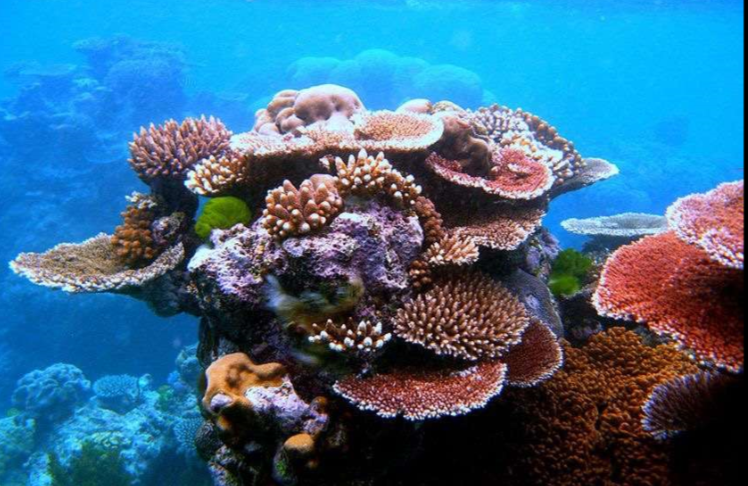
reef building corals live in shallow tropical seas
most are colonial calcifying Anthozoans (class), part of the phylum Cnidaria, true stony corals are in the order Scleratinia
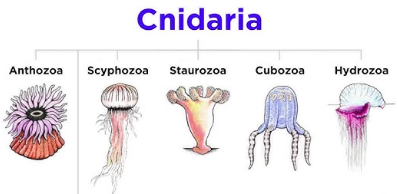
only exist as polyps- sessile, fixed to a substrate
have a simple body plan:
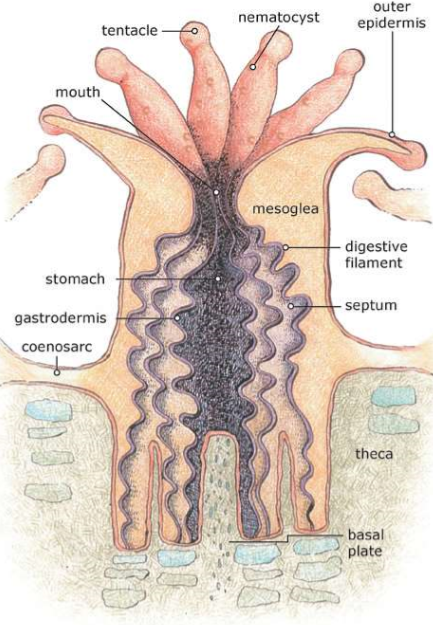
tentacles to draw food in, mouth, simple gut system
nematocyst- stinging, like jellyfish
form an aragonite corallum→ each polyp secretes CaCO3 around and under itself to form a colonial skeleton structure (crystalline)
Growth:
growth occurs on top of previous calcification
slow growth, can persist for a long time so can be very large/heavy
rate of growth and secretion of CaCO3 is controlled by the calicoblastic tissue and is photosynthetic contributions from symbiotic zooxanthellae
primary reef builders are zooxanthellate- contain algal symbionts that contribute to photosynthesis
Zooxanthellae Symbiosis:
coral have a symbiotic relationship with dinoflagellates
they are in the genus Symbiodinium, diverse genus
are an intracellular symbiont→ within host cells
has 3 primary roles:
influence calcification process
through a process called light-enhanced calcification
the more light, the more calcification due to the photosynthetic activity of the zooxanthellae
provide nutrition to host through the coral polyps
carbon fixed by photosynthesis is translocated to the host in the form of useful compounds e.g. amino acids, glucose, glycerol
may provide all the nutrition host needs but corals are heterotrophic anyways
uptake of waste products
take up nutrients→ transform into organic products that the host can use (metabolic kidneys- detoxify waste products)
→ ¼ of marine species are dependent on coral species
Coral Bleaching:
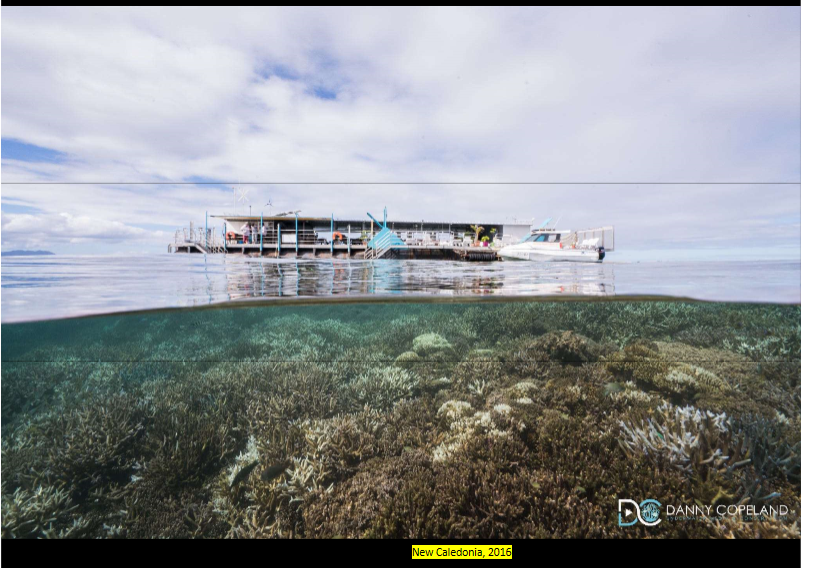
corals are intolerant to environmental change e.g. reduced salinity, prolonged low tides, disease, temperature extremes (primary driver of bleaching)
corals response to stress:
threshold levels- polyps withdraw and increase mucus secretion
past thresholds- expulsion of the symbionts→ causes bleaching
bleaching→ host tissue becomes transparent, reveals the white aragonite skeleton underneath
physiological bleaching→ bleaching happening on a natural seasonal variation in cyclical changes, no death
severe bleaching→ loss of 60-90% of symbiont cells, host loses tissue biomass
Temperature x Bleaching:
coral are ectothermic species→ sensitive to small increases
1-2degrees increases in sea temperatures induce bleaching
el ninos/el nina cycle→
long-term unpredictable cycle that influences large scale oceanic conditions/climates
el nino is associated with warmer sea temperatures
severe el ninos can lead to troubled corals e.g.
super el nino of 1998→ mortality of tropic corals, 16% of shallow water reefs were lost, reduced coral coverage by >90% in parts of the Indian ocean
was unprecedented
another mass bleaching occurred in 2006→ was more severe, more documented
extent of bleaching:

red/yellow is mostly around the tropics, more points were recorded in 2006
Climate change-
increases severity and frequency of events by increasing background temperature
has changed baseline conditions so don’t need sever el ninos now to trigger bleaching
interacts with other stressors too e.g. fishing, pollution→ makes a less resilient system
Ecosystem effects of coral bleaching:
structural complexity of corals provides habitats and food for a diverse range of organisms
particularly important for fish→ major threat for reef fish communities, direct impact through food, other impacts
impact of bleaching on fish species following the two mass bleaching events:
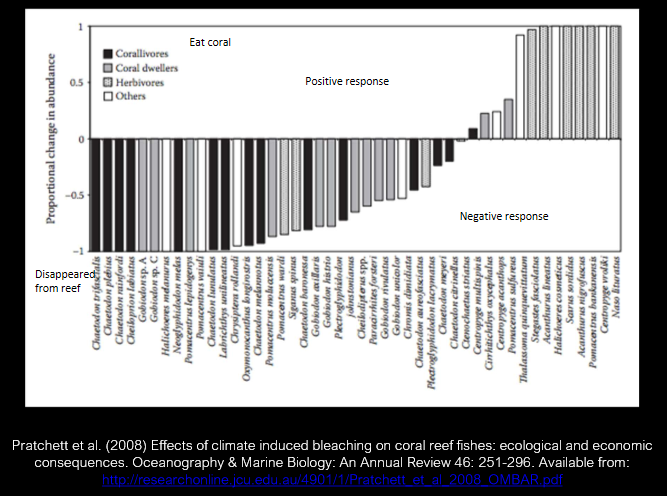
many species have completely disappeared from reef- mostly those that directly eat the coral
community has significantly reorganised and diversity has declined
2016 mass bleaching event:
NOAA reported that a mass bleaching event was imminent was in late 2015
bleaching forecasts:
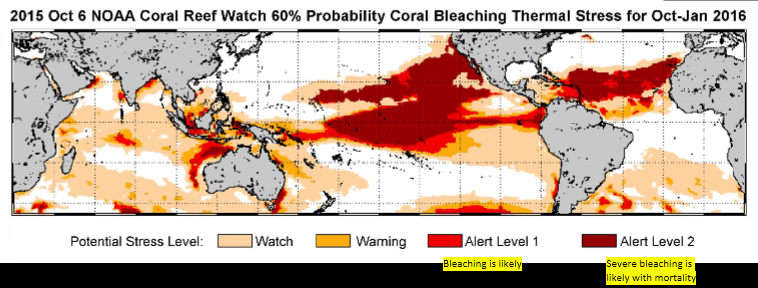

→ prediction of moderate-severe coral bleaching throughout the tropics
see stories in news, was global, most attention was on the great barrier reef
record sea surface temps lead to record widespread coral bleaching
april 2016- more than 1000km were already affected, northern reefs were affected the most
initial aerial survey of bleaching on the GBR:

predictions→ north- 81% severely bleached, central- 33% severely bleached south- 1% severely bleached
november 2016→ estimated how much had died:
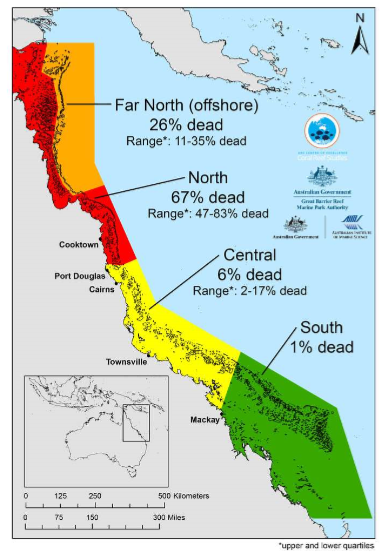
northern- 2/3 died, not quite bad in the rest
22% died altogether
→ was a significant mortality event
The future:
2016 event persisted into 2017, ended in June 2017
return time is getting shorter (median is now 6 years)→ less time for reefs to recover
current sea temperatures are warmer now than previous el nino cycles
annual bleaching may become the norm
current NOAA forecast for Oct-Jan 2025:
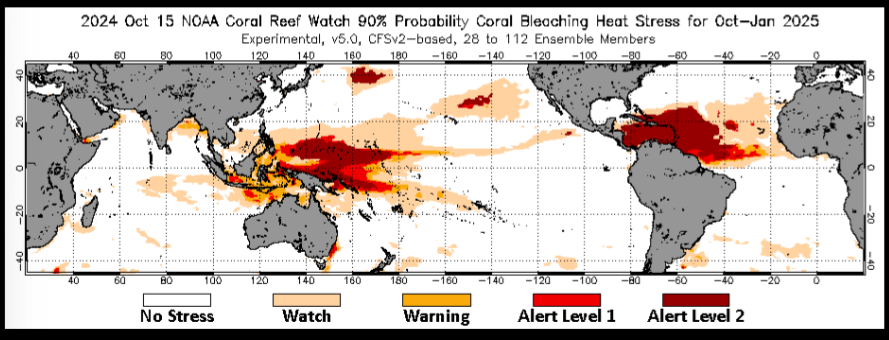
higher probability of coral bleaching heat stress in new guinea, the coral triangle, the caribbean
projected sea surface temperatures (low emissions vs current emissions):
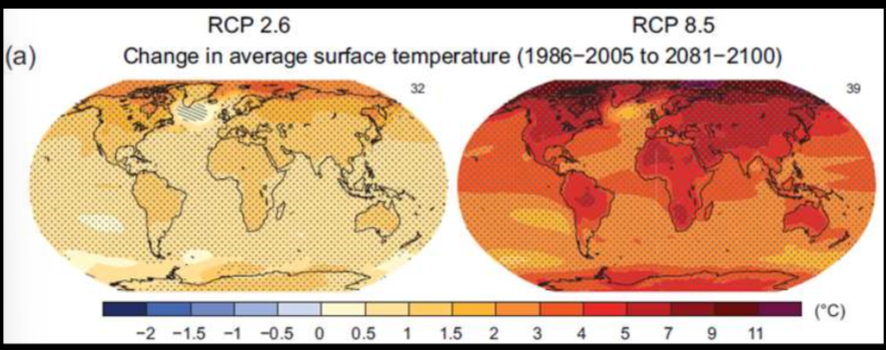
in the tropics, there are 2-3degrees increases in temperatures
other stressors→ aragonite saturation depths (how easy is it for corals to produce their CaCO3 skeletons):
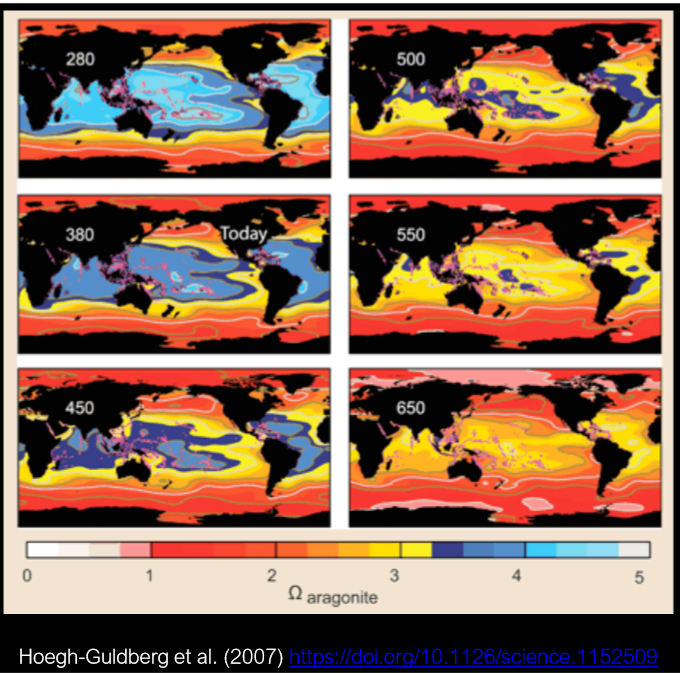
some parts are blue (easy to make skeleton)
are now between 380 and 450 parts CO2→ less blue
Obituary for the GBR:
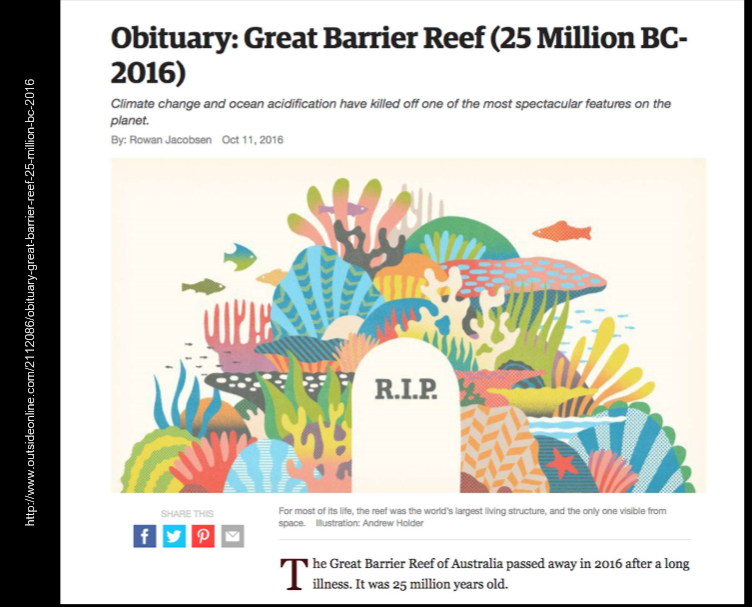
was satirical, got attention on the fight of coral reefs, may have been an oversimplification of conservation messages
had backlash from scientists→ GBR is in trouble but is not dead, should not give up on it, satire was lost in some places and news articles headlined that the GBR was actually announced dead by scientists which is not true
emotional toll on scientists→ how much can these headlines help conservation?
Optimism:
we understand coral bleaching much more than we used to:
understand what’s driving it, can predict the event’s timings and locations so have more options, local solutions, have more data and understanding
in many cases, recovery is possible
¾ of the GBR is still alive